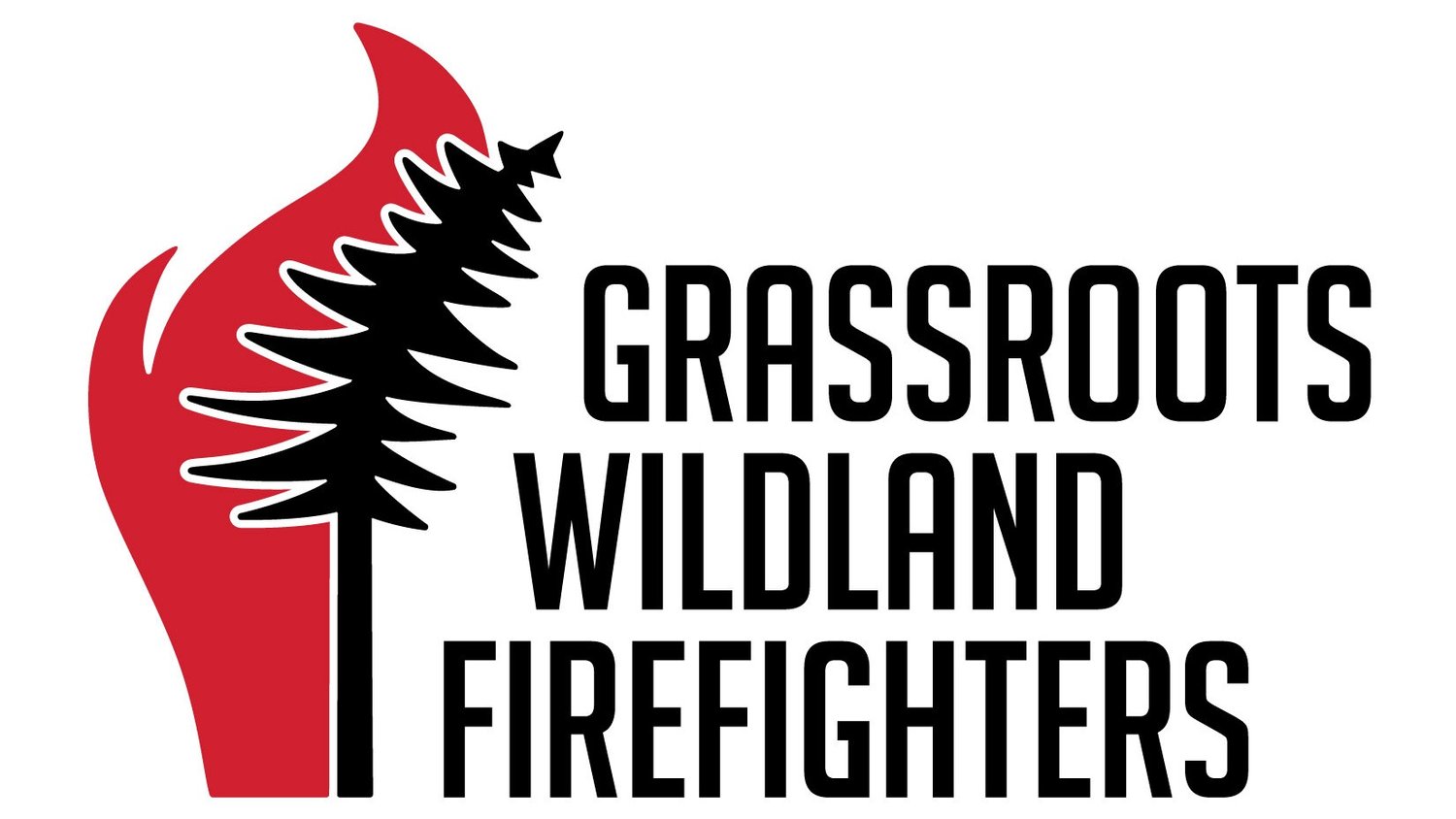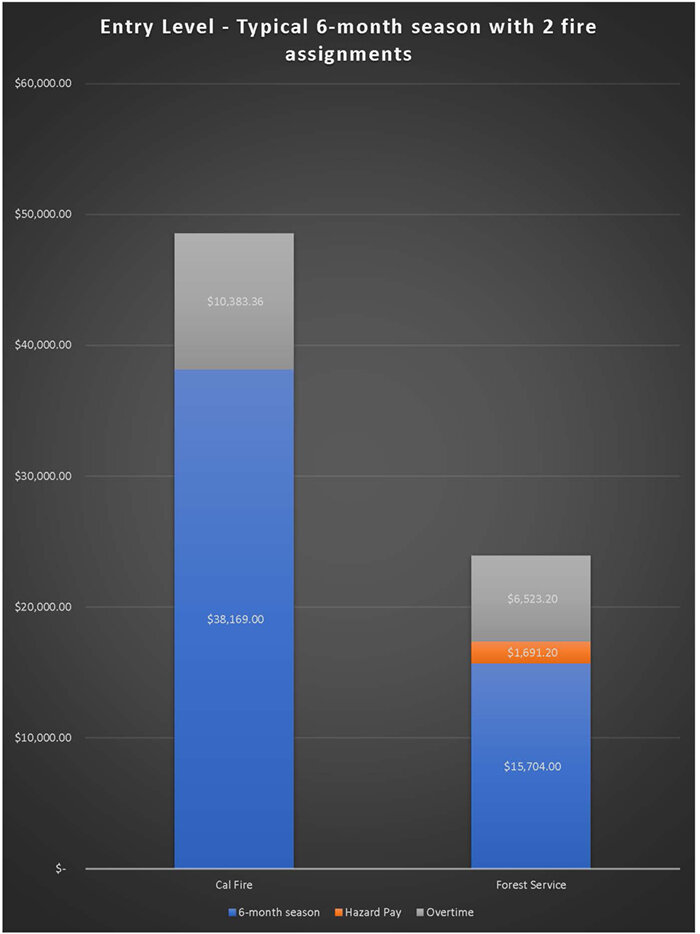
Pay Disparity: Cal Fire vs. Federal
We are asking for equal pay for equal work.
The federal government is the premier wildland firefighting service in the country. It employs the majority of wildland firefighters in the nation, over 10,000 employees, combating wildfires in all 50 states and internationally. In addition, the federal government provides advanced-skill units not offered by state or private entities, such as Hotshot Crews, Smokejumpers, Rappellers, Helitack Crews, and Wildland Fire Modules -- along with the engines and hand crews it staffs at higher levels than its non-federal counterparts. Every major fire in the U.S. relies on federal firefighters and the vital services their specialized crews provide.
All wildland firefighters work hard and put their lives on the line. Cal Fire, private contractors, and municipal fire departments are equal partners in managing our increasingly extreme fire seasons. We respect and value their work; we simply request equal pay for ours.
See for yourself in the graphs below. Considering the pay disparity, it's no surprise that the federal government has a costly retention problem with its wildland fire workforce.
Federal entry level wildland firefighters earn roughly 50% of their Cal Fire counterparts.
Note that the orange (Hazard Pay) and gray (Overtime) are unplannable. The percentage of unplannable income in the Federal Fire Service is much higher (33%) than other wildland firefighting agencies (20%). This unplannable income creates a mental hardship on our workforce, unable to plan for basic needs.
Federal mid-career wildland firefighters earn roughly 50% of a third-year Firefighter 2 with Cal Fire.
Again, we see a large percentage of federal pay (33%) is unplannable, where Cal Fire enjoys a salary that can be planned for, which is critical to ensure the mental health of our workforce.
But what about the benefits? Cal Fire wins there, too.
Retirement Pension
Retirement for Cal Fire is the number of seasons worked, multiplied by 3% of the average of the highest 3 year salaries earned. This percentage is double what federal fire receives. Combine this with the much higher salary, and it is potentially millions of dollars in additional earnings that Cal Fire will receive than a federal employee in retirement.
For fun, let’s compare a Cal Fire Handcrew Captain vs. a Federal Handcrew Captain (GS-8 step 4):
Cal Fire - 25 year career ending up at $127,932 - 3% * 25 years * $127,932 = $95,949 salary in retirement at age 50
30 years retired (Age 80) this pensioner has earned $2.88M
Federal Fire - 25 year career ending up at $53,216 - 1.5% * 25 years * $53,216 = $19,956 salary in retirement at age 57 (Mandatory Retirement Age)
30 years retired (Age 87) this federal pensioner has earned $598,680.
The difference in pension benefits here is over 2.28M dollars!
Entry Level, Temporary Employees
We compare Firefighter 1 Cal Fire Employees to GS-3 Federal wildland firefighters
Cal Fire Firefighter 1 with 3 years experience compared to a Federal GS-4
Mid-Career Comparison
We compare a first year Cal Fire Firefighter 2 (Permanent employee) to a GS-5
We compare a third year Firefighter 2 with a GS-6 Federal employee
A typical fire assignment consists of 14-days away from home. We did not include travel days for simplicity. Our figures underestimate the disparity because if Cal Fire picks up an extra shift, they are paid 24 hours of overtime pay, where the federal wildland firefighter can typically expect only 8-12 hours of pay for an extra shift.
While a federal employee can get stuck at GS6 levels even though their qualifications may warrant much higher pay, Cal Fire entry level pay for their temporary employees exceeds many management positions in the federal service.
Sources for pay come from Cal Fire Compensation Survey and the Federal Office of Personnel Management




